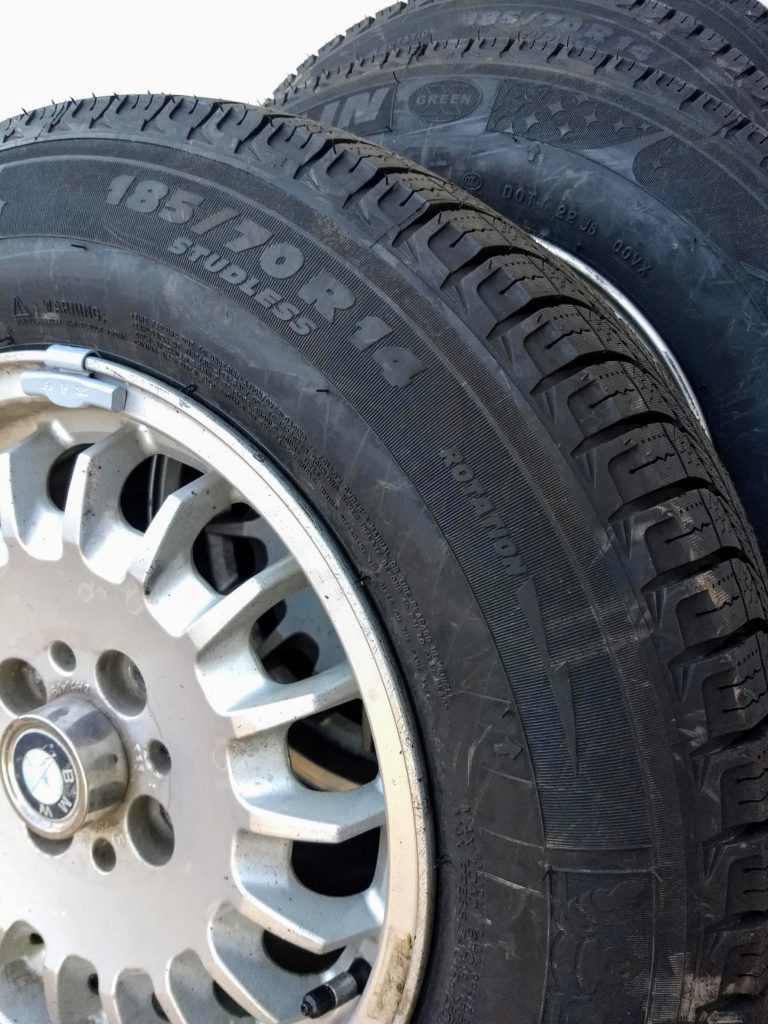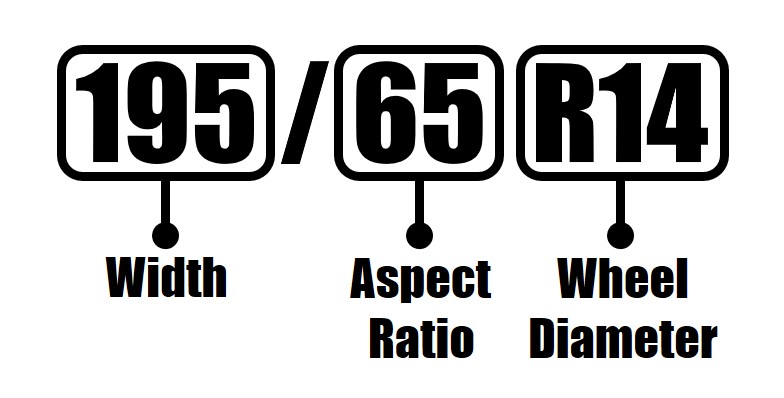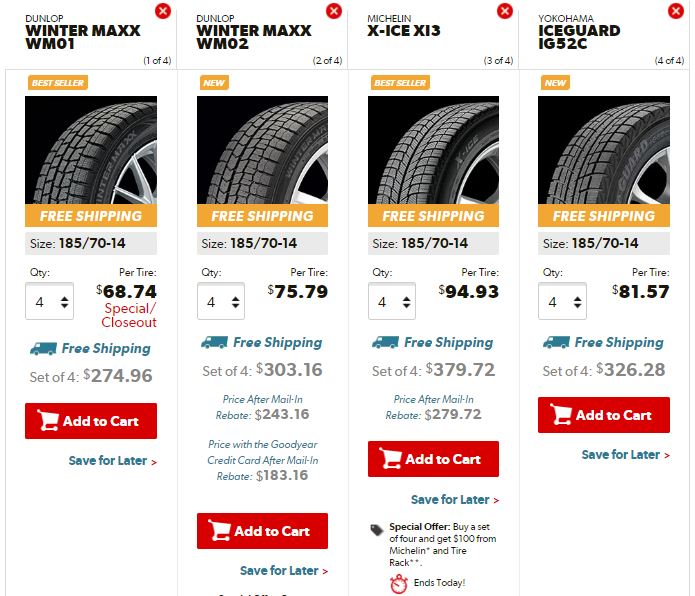
If you’ve shopped for winter tires for your E30 recently, you’ve probably noticed that there aren’t many options. The stock tire size for E30’s (ix and M3 excluded) is 195/65R14. Unfortunately, it’s not a particularly common size anymore. Today we’ll look through what options we have for finding good tire winter tires.
Offerings for Stock Tire Size
A quick look at Tire Rack yields the following:

Yes, that’s it. The only tire available in E30 stock size is a summer tire from Vredestein (who??). Mavis offers a similar selection:

Unfortunately, the E30 tire size has become nearly obsolete, as newer cars go to larger wheels, and the cars left with 14″ rims tend to have skinny tires. So, your old “no-seasons” are wearing low, there’s a snow storm in the forecast, and hunkering down at home isn’t an option. What can you do?
Tire Size Terminology
Our first step is to talk a little bit about tire sizes. A tires is defined by 3 numbers: Width, aspect ratio, and wheel diameter. Let’s define each one:

Width: The first number in a tire’s size (in our case, 195) is the nominal width of the tire in millimeters. So, a 195/65R14 tire is 195mm wide, while a 205/55R15 is 205mm wide.
Aspect Ratio: This is the second number in the tire size, under the “/”. It’s the ratio of the tire’s sidewall height to width, expressed as a percentage. Therefore, a 195/65R14 tire has a sidewall height that is 65% of it’s width. If we do the math, sidewall height = 195mm x 65% = 126.75mm. This is the distance from the edge of the rim to the outer diameter of the tire.
Wheel Size: The third and final number in the tire size is the rim diameter, in inches, oddly enough. So our 195/65R14 tire fits a 14″ rim.
Picking an Alternative E30 Tire Size
What do all these numbers mean for us, and finding an alternative E30 tire size? The biggest consideration is tire diameter. You need to keep diameter as close to original size as possible. Changing tire diameter will not only change the car’s ride height, output, and feel, but it will also make your speedometer and odometer inaccurate. Here’s why: your odometer is fed from a sensor on the diff. It’s calibrated to convert a specific diff RPM (aka wheel RPM) to MPH, based on the diameter of the tire. For that reason, you need to keep your tire diameter as close as possible to stock.
So what can we change? Wheel size is one option: going to 15″ rims will open up some options for us; 16″ really widens the spectrum. However, I’m going to assume you’re like me, and don’t want to pony up the cash for a new set of rims. So let’s stick with 14″.
If we don’t change change rim size, then we don’t have any control over aspect ratio, since we need the tire diameter to remain unchanged. So what’s left? Width. We’ll have to find a wider or narrower tire that keeps the other two numbers the same. The easiest way to do this is with a tire calculator (unless you want to manually calculate yourself). I typically use TireSize.com, since their tool lets you compare your stock tire size to other options. For our cars, there are several standard tire sizes in similar widths. Here they are:
185/70R14
185/65R14
195/75R14
215/60R14
225/60R14
In my opinion, at 65mph, an error of 2 mph is acceptable; I’d like it to be 1 mph or less. using TireSize’s calculator, the most ideal sizes are 185/70R14 and 215/60R14, as they’re both well under a 1 mph error at 65 mph. Both of these tire sizes yield significantly more results from most manufacturers. For snow, a narrow tire is actually better, as the load is concentrated over a smaller area, and the car will be less likely to “skate” on the snow. Don’t believe me? Check out the pics in this article on snow rally driving: Going for a Bobsled Run in a Subaru WRX STI.
Conclusion
For all of these reasons, I recommend a 185/70R14 tire for our E30’s in the winter. In that size, you’ve got a couple of great options currently. Several of the major tire manufacturers have snow tires in this size. Here’s Tire Rack’s current offering:

We’re particularly fond of Michelin’s XI3’s, but that’s just us. Whichever you choose, you’ll be far better off with winter tires than slipping and sliding around on all-seasons or summer tires. And you can be confident that you’ve chosen the right size, and that your odometer and speedometer will be accurate. Happy snow driving!

